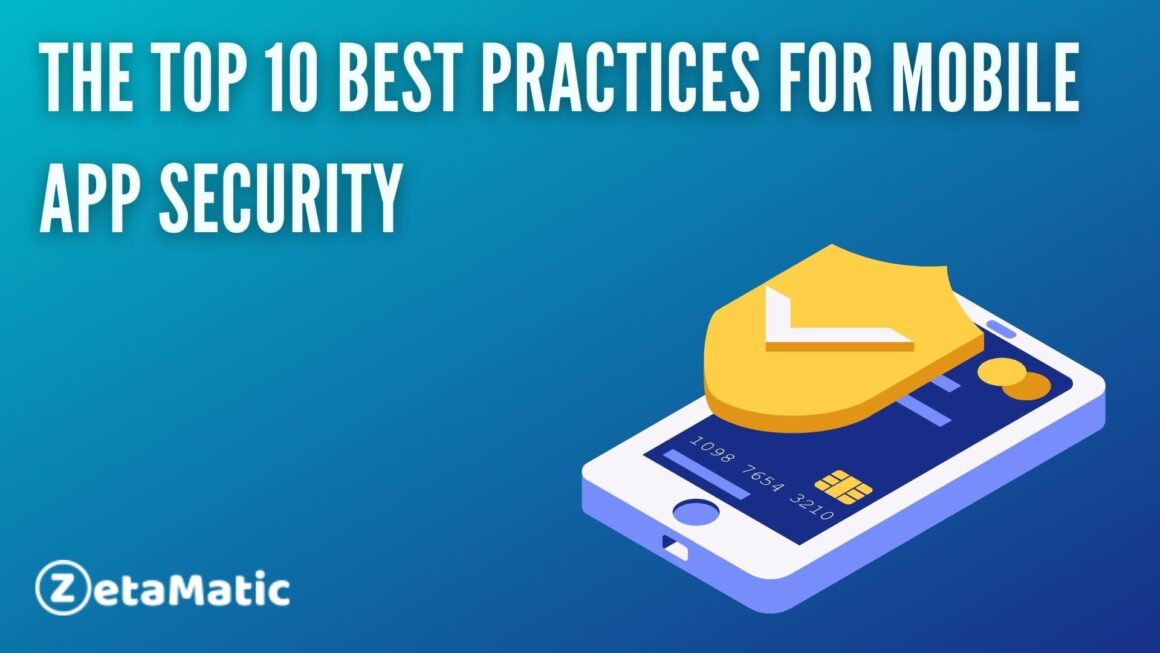Mobile apps have grown in popularity immensely in the past few years. And this trend isn’t going to change anytime soon. By the end of 2015, there were 3 billion smartphone users worldwide. This means that people rely on mobile apps more than ever before to get things done on the go. From managing their health and fitness to accessing news or entertainment wherever they are.
Whether you’re creating apps for your company or client-facing apps for clients, one thing remains clear. Mobile apps remain the prime target for malicious activity. Hence, organizations should safeguard their apps while enjoying the tremendous benefits that these apps provide.
1. Data Protection
Data protection is a key concern as mobile apps store highly sensitive data on their cloud storage. With the increasing reliance on mobile app development services, organizations must prioritize the prevention of unauthorized access to application data. This can be achieved by deploying top-class encryption techniques to safeguard mobile app data from malware and hackers.
OTA updates: To ensure better app functionality, it is important to provide regular bug fixes and feature enhancements through over-the-air (OTA) updates.
Patch management: Regular security patches deployed whenever new vulnerabilities arise so that applications protected from malicious attacks at all times.
Authentication & authorization: Authentication of users protect sensitive user information against theft or hacking attacks while authorization protects against manipulation of features within an application.
2. Security Testing
The developers need to test apps on different devices to verify how they perform on different operating systems. While testing, organizations should make sure that no sensitive data is leaked to unauthorized third parties.
Also, it’s best to perform regular penetration testing of apps. It can detect if any security loopholes are present in your app. For example, if an attacker manages to install malware on a developer’s device. They can bypass all app protection measures and access sensitive information via unprotected channels.
Thus companies must also conduct regular tests on their employees’ mobile devices. Another important part of mobile app security is making sure that only authorized users have access to critical features of your application so as not to provide hackers with any backdoor entry point into your app, especially when offering food delivery app development services.
3. Data Leakage Prevention
A data leakage prevention (DLP) strategy is now an essential component of corporate security programs. You can use DLP to address privacy concerns by restricting access to sensitive information based on user roles, departments, or any other identifiable criteria you set.
This is one of several ways to prevent employee mistakes or intentional abuse from affecting company assets. For example, if your company uses a cloud-based solution for storage and collaboration. You may want to block employees’ ability to email files outside of your network—especially. If they are customers’ personally identifiable information (PII).
Your DLP strategy should help you determine what data can be accessed by whom and under what circumstances.
4. Vulnerability Management
Vulnerability management is a framework to handle vulnerabilities. The goal of vulnerability management is to find, assess, remediate. And monitor vulnerabilities in your software, application, or systems before they exploited by hackers.
A robust process identifies vulnerabilities quickly and prioritizes them based on their potential business impact. Vulnerabilities considered found when they reported by internal security teams, external parties, or even customers.
Once found, each new vulnerability should be tracked until it has been addressed either through fixing the vulnerable code or compensating with other security measures such as intrusion detection/prevention systems or network monitoring products.
5. Encryption at Rest
Making use of encryption while storing your data helps to protect it from being accessed by unauthorized parties. You can opt to encrypt a file’s contents, or you can choose a more secure option and encipher files using asymmetric encryption, which ensures that only authorized users can decrypt them.
If you have a public website, use SSL certificates to encrypt data transmitted between your customers and your website. And it goes without saying that when dealing with payments online. Always make sure payment information encrypted in transit. It doesn’t matter how many layers of security you implement on your end if customers aren’t protected in transit.
6. Identity Access Management
The best way to do so is to deploy identity access management solutions. These products help organizations manage who has access to corporate information, devices, and applications.
They can also control what kinds of access people have. Many of these solutions support multifactor authentication. Which sends a second layer of security in addition to passwords that easily stolen or guessed.
Multifactor authentication means users might need something they know along with something they have. Some advanced identity access management systems even use something you are (biometrics) in addition to all three factors.
7. Patch Management
Get to know about how to apply security patches regularly to protect against zero-day vulnerabilities. It’s especially important that your mobile apps regularly patched. As app developers often lag behind when it comes to protecting their creations.
For example, many Android devices received a security patch in January 2015 that closed up a hole that allowed hackers to take over smartphones by sending them a single malicious text message. If you fail to apply patches on time, you can put your users at risk of hacking.
8. Malware Detection & Prevention
Your mobile app may be exposed to malware and vulnerable to malicious attacks. Malware includes viruses, worms, Trojans, and rootkits that can damage or gain control of your apps. To protect your mobile app from such threats, you should install an anti-malware application on your device.
With such an application installed, each time you download a new app. Or file from any source you will get a notification informing if it infected with malware or not. If it detects malware in any file then it will block its installation process and inform you about that too. So at first, it is important to know how to detect and prevent these attacks. In order to find out if there are any security issues within your mobile app. There are several static code analyzers available today that scan applications. While they developed using automated static analysis tools.
9. Application Firewall (AppFW)
An application firewall is a new security control in Windows Server 2016, which acts as an additional layer of defense to protect against attacks targeting applications. This feature can used with any application. Whether it’s developed by an internal team or by a 3rd party developer.
We recommend organizations implement application firewalls on their servers running server applications, especially when these applications are web-accessible. This will ensure that these applications protected. While enabling them to continue receiving requests from external sources.
10. User Authentication & Privilege Management
Authentication is about proving that you are who you say you are, using one or more of several available mechanisms. Privilege management describes how applications limit what users can do with their access privileges. For example, they may allowed to access certain data but not modify it. Securely managing user access rights is critical to protecting your app’s data and services from abuse by rogue employees or attackers.
If you found this post useful, then please take a moment to share it on social media. Subscribe to our YouTube channel for videos related to WordPress plugins and themes. Follow us on Facebook and Twitter for more updates.








